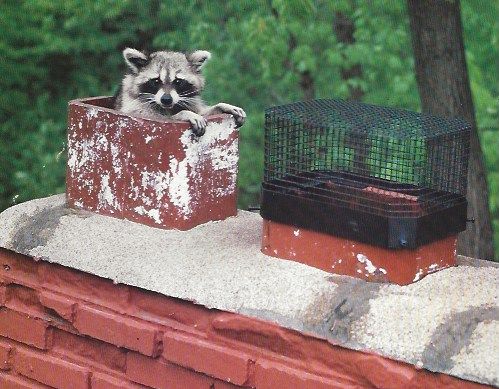When Should You Schedule Chimney Animal Removal in Scottsdale
Homeowners in Scottsdale enjoy the unique blend of desert charm and suburban comfort. However, the Sonoran environment invites all kinds of wildlife to explore homes—especially chimneys. Birds, raccoons, squirrels, and even bats often seek warmth and shelter in chimneys, which can lead to health and safety concerns. So, when should you schedule Chimney Animal Removal in Scottsdale? Let’s explore the signs, seasons, and strategies that make timing critical.

Trust local experts for Chimney Animal Removal in Scottsdale to prevent health risks and restore safe fireplace function quickly.
Why Wildlife Enters Chimneys
Animals enter chimneys seeking shelter, nesting grounds, or warmth—especially during extreme Scottsdale weather conditions. In spring and fall, nesting and migration drive many animals to find refuge. In winter, chimneys provide a warm and safe haven from desert cold snaps.
Identifying the right time for Chimney Animal Removal involves recognizing early warning signs, understanding the local wildlife calendar, and acting before problems escalate.
Signs You Need Chimney Animal Removal
Use this table to assess whether it’s time to call a professional:
| Warning Sign | What It Means | Action Needed |
|---|---|---|
| Scratching or chirping sounds | Animals are actively nesting inside | Schedule removal immediately |
| Foul odor from fireplace | Decomposing animal or waste buildup | Seek urgent inspection |
| Debris in the hearth | Nesting materials are falling into your fireplace | Have chimney checked |
| Smoke backup | Obstruction likely caused by an animal | Emergency chimney cleaning |
| Visual confirmation | You see an animal entering or exiting chimney | Do not attempt DIY removal |
Best Time of Year for Chimney Animal Removal in Scottsdale
Timing is everything when it comes to Chimney Animal Removal. The desert climate plays a major role in wildlife activity:
- Spring (March to May): Peak nesting season for birds and squirrels.
- Summer (June to August): Bats are highly active and often roost in cooler chimney spaces.
- Fall (September to November): Raccoons prepare for winter and may seek chimney shelters.
- Winter (December to February): Animals seek warmth and become more aggressive in chimney occupation.
Ideal Time to Schedule Removal:
Late winter or early spring—before nesting begins—is the best preventive window. However, any sign of animal activity should prompt immediate Chimney Animal Removal regardless of season.
Why Prompt Chimney Animal Removal Is Crucial
Delaying removal can result in:
- Blocked flues leading to dangerous carbon monoxide buildup.
- Fires from nesting debris.
- Infection risks like histoplasmosis, rabies, or fleas.
- Structural damage from persistent gnawing or nesting.
In Scottsdale’s dry climate, these risks are compounded by higher fire danger and rapid bacterial spread. Professional Chimney Animal Removal in Scottsdale ensures humane, legal, and safe eviction of wildlife.
Cost of Chimney Animal Removal in Scottsdale
Prices vary depending on species, severity, and time of year. Here’s a breakdown of common costs:
| Service | Estimated Cost Range | Details |
|---|---|---|
| Initial Inspection | $75 – $150 | Includes chimney camera inspection and species ID |
| Animal Removal | $150 – $500 | Cost varies by animal and nest location |
| Chimney Cap Installation | $200 – $400 | Prevents future intrusions |
| Sanitization & Deodorizing | $100 – $250 | Eliminates harmful bacteria and odors |
| Emergency Service (Same-day) | $250 – $600 | Urgent removal and blockage clearing |
Affordable Chimney Animal Removal in Scottsdale keeps your home pest-free by humanely removing animals nesting in flues and chimney caps.
FAQs
Q1: What animals are most commonly found in Scottsdale chimneys?
A1: Birds (especially pigeons), raccoons, bats, and squirrels are frequently encountered in local Chimney Animal Removal cases.
Q2: Is animal removal from a chimney legal in Arizona?
A2: Yes, but it must follow Arizona Game and Fish Department regulations. Professional services ensure compliance with humane and legal standards.
Q3: Can animals damage my chimney structure?
A3: Absolutely. Clawing, biting, and nesting can deteriorate the flue liner, chimney crown, and damper system.
Q4: What happens to the animals after removal?
A4: Most professionals relocate them to approved wildlife areas, adhering to Arizona state laws on humane relocation.
Q5: How can I prevent animals from returning?
A5: Install a chimney cap, seal all entry points, and schedule annual chimney inspections.
Q6: What if I hear noises but don’t see an animal?
A6: Noises, especially at night or early morning, are a key sign of animal presence. Don’t wait—schedule an inspection.
Q7: Can I use a fire to drive the animal out?
A7: No. Lighting a fire can injure or kill trapped animals, creating more risks and possibly legal trouble. Always opt for professional Chimney Animal Removal.
Q8: How long does the removal process take?
A8: Most removals take 1-2 hours, but some cases (e.g., with multiple nests) may require follow-up visits.
Q9: Are there eco-friendly Chimney Animal Removal methods available?
A9: Yes. Scottsdale professionals typically use humane traps, exclusion devices, and natural repellents when possible.
Q10: Will home insurance cover Chimney Animal Removal?
A10: Coverage varies. Many policies do not cover wildlife removal unless there’s associated damage. It’s best to check your policy.
Conclusion
If you’re wondering when to act, the answer is simple: as soon as you notice signs of intrusion. Scottsdale’s wildlife can turn a chimney into a breeding ground, health hazard, or fire risk. Timely and professional Chimney Animal Removal can protect your home, family, and pets.
Whether it’s springtime nesting or a sudden winter invasion, scheduling an inspection today can save you costly repairs tomorrow. For peace of mind, pair removal with preventive solutions like chimney caps and seasonal maintenance.
Read More: Scottsdale Chimney Sweep










Leave a Reply
Want to join the discussion?Feel free to contribute!